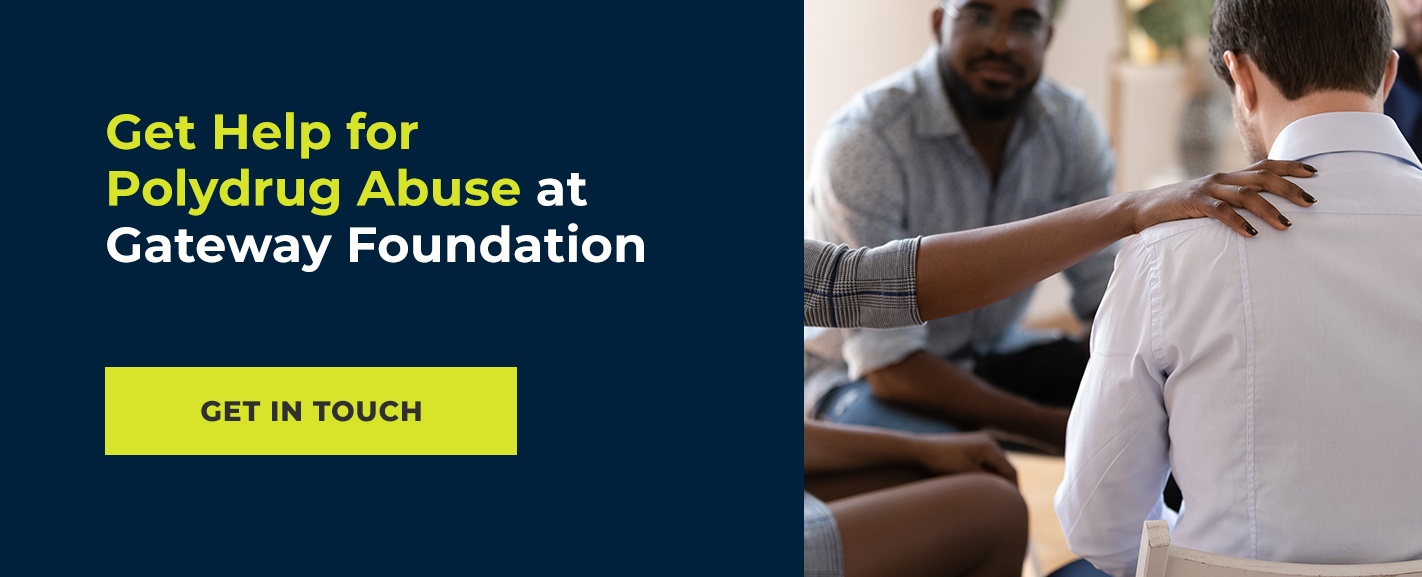- Apr 27
- AddictionTeen Drug Alcohol AbuseTeen Substance Abuse
Alcohol is the most commonly used intoxicant, with studies showing that 70 percent of people have had one or more drinks in the past year, and 55 percent of people report drinking in the past month. Despite the many well-known health consequences associated with alcohol consumption, many people put themselves in greater danger by mixing alcohol with other substances.
Whether it is done on purpose or by accident, mixing drugs and alcohol is incredibly dangerous and, in many cases, life-threatening. Understanding the effects of mixing drugs and alcohol can help prevent unnecessary health events and long-term damage from adverse interactions.
- Biological Mechanism of Alcohol-Drug Interactions
- Dangers of Mixing Alcohol and Prescription or Over-The-Counter Drugs
- Avoiding Accidental Drug Mixes
- Mixing Illicit Drugs and Alcohol
- 1. Cannabis and Alcohol
- 2. Alcohol and Cocaine
- 3. Alcohol and Opioids
- 4. Alcohol and Hallucinogens
- 5. Alcohol and Methamphetamine
- Get Help for Polydrug Abuse at Gateway Foundation
Biological Mechanism of Alcohol-Drug Interactions
Why is it dangerous to mix alcohol and drugs? For a drug to work, the substance usually has to travel through the bloodstream to the site of its activity, where it triggers changes in tissues or organs. During the process of metabolism, the effects of the substance diminish until it is eliminated from the body completely. Alcohol works this way, moving through the blood to act on the brain and nervous system until enzymes in the liver metabolize and remove it.
When the liver and its enzymes are busy metabolizing alcohol, they cannot metabolize other substances at full efficiency. If another drug is consumed while alcohol is still being processed, it competes with the alcohol for the same metabolic enzymes, leaving more of the drug in the system for longer and increasing its availability — this increases the likelihood of negative side-effects from both alcohol and the additional drug, leading to potentially fatal drug interactions.
Over a period of chronic drinking, the enzymes produced and activated in response to drugs changes for the long-term to process greater amounts of drugs — this is why people who drink chronically often need greater dosages of medications than non-drinkers. Some drugs complicate the matter even further by influencing how alcohol is metabolized, causing it to leave the system more slowly or more quickly.
The range of effects of mixing drugs and alcohol is immense, whether the other substance is prescribed or illicitly obtained.
 Dangers of Mixing Alcohol and Prescription or Over-The-Counter Drugs
Dangers of Mixing Alcohol and Prescription or Over-The-Counter Drugs
Nearly half of Americans take a prescription drug, and when you add that to the 55 percent of people who drink alcohol once or more monthly, it becomes likely that at least some of the population is mixing alcohol with prescription drugs on purpose or by accident. These are some of the most common prescriptions mixed with alcohol:
Anesthetics
When a patient needs to be unconscious for a surgical procedure, anesthetics are administered. The compound that renders the patient unconscious is called Propofol 1. Chronic drinking raises the concentration of Propofol 1 necessary to cause unconsciousness, requiring the administration of more anesthetic and increasing the risk of side effects from the medication. The effects of sedative gases like halothane and enflurane can also cause greater damage to a liver suffering from chronic alcohol consumption.
Antibiotics
One of the most common mistakes is mixing antibiotics with alcohol. The combination of alcohol with linezolid can result in a suite of awful side effects, including:
- Nausea
- Vomiting
- Migraine headaches
- Flushing
- Rapid heart rate
- Seizures
When combined with doxycycline, another common antibiotic, alcohol reduces the antibiotic’s effect and may render it useless against the disease.
Anticoagulants
Anticoagulants reduce coagulation in the blood, with warfarin being the most commonly prescribed. Acute alcohol consumption actually improves the effect of warfarin, so that a person’s blood can become dangerously thin while taking the prescribed dosage. This increases the risk of fatal hemorrhaging.
Conversely, chronic drinking eventually increases warfarin’s availability, creating the potential for blood-clotting disorders.
Antidepressants
Alcohol is known to make symptoms of depression worse, but it is also one of the more common fatal drug interactions. Monoamine oxidase inhibitors (MAOI) antidepressants combined with alcohol can raise blood pressure to dangerous levels and even lead to a stroke.
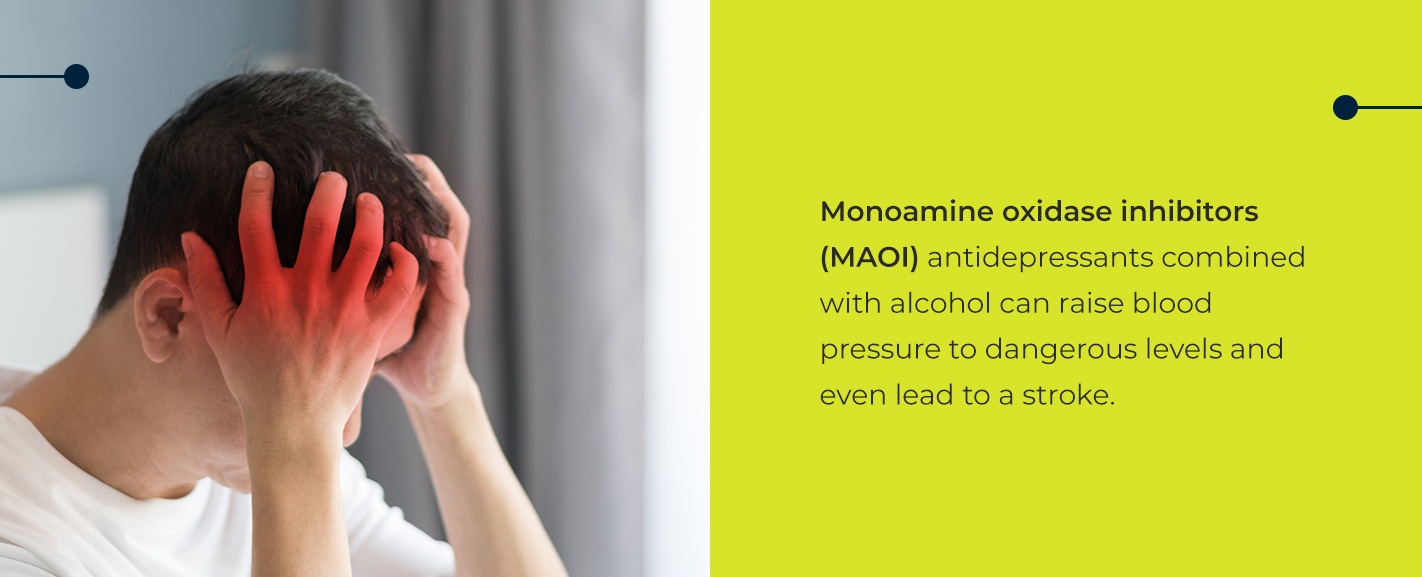
Antihistamines
Antihistamines like diphenhydramine (Benadryl) can be used to treat allergies as well as insomnia, and don’t require a physician’s prescription. Alcohol’s depressant effect on the central nervous system (CNS) increases the sedative effect of antihistamines to a potentially dangerous level. This combination of substances can produce acute drowsiness and sedation, and in some cases severe dizziness.
Antipsychotics
Antipsychotic drugs are prescribed to manage symptoms of psychosis, like delusions and hallucinations. These drugs also have sedative properties that alcohol enhances, which can lead to highly impaired coordination and severe breathing complications. High doses of alcohol and antipsychotic medications can also cause significant liver damage.
 Anti-Seizure Medicines
Anti-Seizure Medicines
People with epilepsy rely on anti-epileptic drugs (AEDs) to keep their seizures in check. Moderate consumption, such as having one or two drinks per day, is typically safe for people taking these medications. Drinking any more than that, however, can change how the body processes AEDs and make them far less effective in protecting against seizures.
Benzodiazepines
Benzodiazepines, including Valium and Xanax, are some of the most commonly prescribed medications on the market. They work on the CNS to reduce the symptoms of anxiety and insomnia. Because alcohol also depresses the nervous system, the synergistic effect results in dangerous symptoms like:
- Loss of coordination
- Extreme drowsiness and sedation
- Memory loss
- Impaired vision
- Slowed reflexes
- Breathing problems
This is one of the most deadly drug combinations, and at higher doses can also result in coma or death.
NSAIDs
Non-steroidal anti-inflammatory drugs (NSAIDs) like ibuprofen are some of the most common over-the-counter drugs people mix with alcohol. Taking ibuprofen in high doses or for an extended period of time increases the risk of bleeding in the digestive tract, and alcohol further irritates the stomach and gastrointestinal tract — this can result in ulcers and increases the risk of stomach bleeding even further.
NSAIDs also affect kidney function, making them less able to filter out the toxins in alcohol. Other symptoms include rapid heartbeat and drowsiness that may affect the ability to function normally. While healthy people who only take NSAIDs infrequently are not too likely to experience a fatal drug interaction, mixing them with alcohol can still lead to dangerous bleeding and reduced kidney function.
Stimulants
Prescription stimulants like Adderall enhance the effect of certain neurotransmitters that heighten alertness and focus. Alcohol decreases the effects of the same neurotransmitters. In small doses, alcohol may temporarily act as a stimulant, intensifying and extending the stimulation someone on Adderall experiences.
When drinking heavily, stimulants end up delaying the sedative effects of alcohol that usually cause people to stop drinking — this may result in a person drinking more than they would under normal circumstances, overwhelming the liver and leading to an overdose.
Avoiding Accidental Drug Mixes
The medications listed above are just a few of the prescriptions that can have serious or fatal drug interactions with alcohol. Any time you take a prescription or over-the-counter medication, it’s essential to ask your physician or pharmacist about potential drug interactions and whether you can drink while on the medication. As a general rule, alcohol’s extensive effects on the brain and nervous system always add risk to any medication.
Mixing Illicit Drugs and Alcohol
While many people forget or aren’t aware of potential interactions and mix alcohol with their medication accidentally, another subset of people mix illicit drugs and alcohol on purpose. The intent may be to increase the effect of a high or decrease negative symptoms, but either way, the results can be deadly:
1. Cannabis and Alcohol
Mixing cannabis with alcohol is becoming more common and more accepted due to the increasing number of states with medical and recreational marijuana laws. However, most people who combine the substances don’t understand the extent of the danger involved in the combination.
Enhanced Effects of THC
As with other substances, alcohol causes the active ingredient in cannabis (THC) to remain in a person’s system longer than it would under normal circumstances. The liver prioritizes alcohol over THC, metabolizing it first even when the substances are consumed at the same time. This leaves more THC in the system, creating further intoxication as it waits to be metabolized.
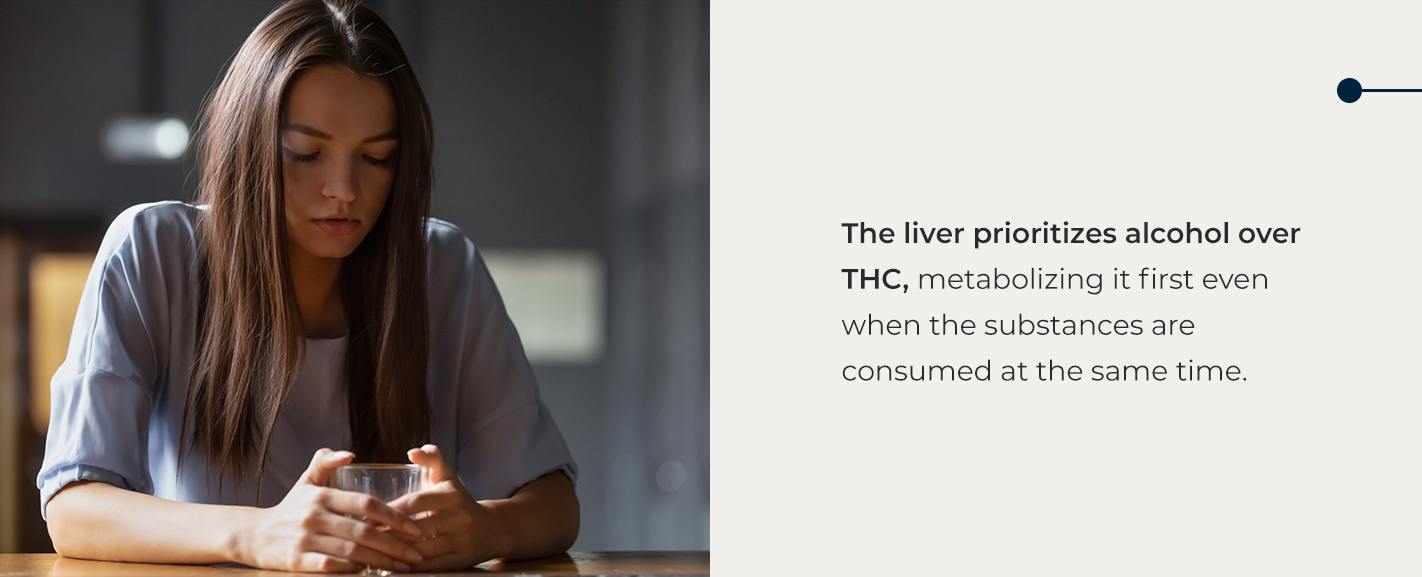
This effect can lead to acute cannabis intoxication, which increases the risk of negative side effects like:
- Agitation and paranoia
- Difficulty concentrating
- Sweating
- Feeling dizzy
These effects are collectively known as “greening out” and can cause people to behave in dangerous or erratic ways.
Decreased Judgment
Alcohol and cannabis are both well-known for impairing judgment and leading to poor decision-making, so it’s no surprise that combining the two worsens the effect. One study found that the simultaneous use of alcohol and marijuana doubled the odds of accidentally harming oneself, experiencing negative social consequences and driving drunk, compared to the use of alcohol alone.
Decreased judgment also impairs a person’s ability to determine their own level of intoxication, which can lead to further drinking that triggers alcohol poisoning and potentially death.
Increased Overdose Risk
Cannabis is known to be an antiemetic, meaning it reduces nausea and vomiting. In applications such as soothing symptoms from chemotherapy, this ability can be very therapeutic. In combination with alcohol use, however, it can mean that someone who has drunk dangerous amounts of alcohol may not be able to vomit as they would naturally. This can quickly lead to an overdose and may increase the chances of needing extreme measures like stomach pumping to remove alcohol from the stomach.
2. Alcohol and Cocaine
It is common for people with a formally diagnosed alcohol use disorder to use stimulants like cocaine for one of two reasons: alcohol may be used to reduce or halt the effects of the stimulant drug, or it may be used to allow someone to consume more of the stimulant without experiencing as many of the side effects.
However, alcohol and cocaine are deadly drug combinations due to a huge array of side effects. These include:
- Reducing the effect of cocaine, potentially causing the person to use more cocaine than normal and increasing the risk of overdose.
- Reducing the effect of alcohol, leading to greater alcohol consumption and overdose risk.
- Greatly increased burden on the liver, which may lead to more significant liver damage over time compared to the use of alcohol alone.
- Increased possibility of damage to other organs and systems, such as the gastrointestinal and cardiovascular systems, as well as the kidneys.
- Increased possibility of neurological damage to the brain, development of seizures and stroke.
- Immediate motor coordination problems that increase the chances of someone being involved in injurious accidents such as car crashes.
- Creating cognitive deficits in attention, memory, concentration, rational thinking and judgment, which may all contribute to risky behavior.
- Increased possibility of cancer and other diseases due to immune system dysfunction.
- Significant and worsening respiratory problems.
- Increased risk of developing a physical dependence on one or both substances.
- Increased risk of developing a mental health disorder.
This large pool of potential effects is representative of the effects of both drugs on the central nervous system. Both substances create significant interference with the CNS on their own, and combining them only increases the stress on the nervous system and organs. There is also the factor of cocaethylene, the dangerous substance produced when alcohol and cocaine are metabolized by the liver.
 Cocaethylene
Cocaethylene
Cocaethylene is the result of combining alcohol and cocaine. It is a highly toxic substance produced by the liver. During the liver’s attempts to metabolize cocaine and alcohol, about one-fifth of the cocaine is turned into cocaethylene. If alcohol consumption is continued, cocaethylene is released throughout the body and can cause significant damage to organs.
Cocaethylene is a metabolic waste product that is far more toxic than either cocaine or alcohol on their own. Its estimated toxicity is almost 30 percent greater than that of cocaine itself. It also remains in the body three times longer than cocaine once the liver starts producing it, greatly increasing the risk of toxic damage to multiple organs and systems. Some of the potential effects include:
- Increased potential of experiencing a heart attack or stroke.
- Increased potential of developing liver damage, due to a longer half-life and extended presence in the body.
- Reuptake of dopamine, resulting in bingeing on cocaine, alcohol or both.
- Increased excitatory neurotransmitter activity, resulting in greater potential for seizures.
- Increased chance of negative effects on cognition, resulting in more impulsivity and worse decision-making.
- Increased susceptibility to and risk of disease due to cocaethylene toxicity in the body.
- Increased risk of developing psychosis.
According to the National Institute on Drug Abuse (NIDA), mixing cocaine and alcohol is very common. It is also responsible for a large number of fatalities. Sudden, unexpected death due to stroke, seizures or heart attacks are a result of cocaethylene, while accidents, suicide and violent crime can result from the behavioral issues experienced during this form of intoxication.
3. Alcohol and Opioids
Opioids may be legally obtained as a way to treat pain, but there is also the problem of prescription opioid misuse and illicit opioids. As they are part of the same drug class, legally prescribed opioids function in the same way as street drugs like heroin, just at a lower concentration. Regardless of their origin, mixing any opioid with alcohol is incredibly dangerous.
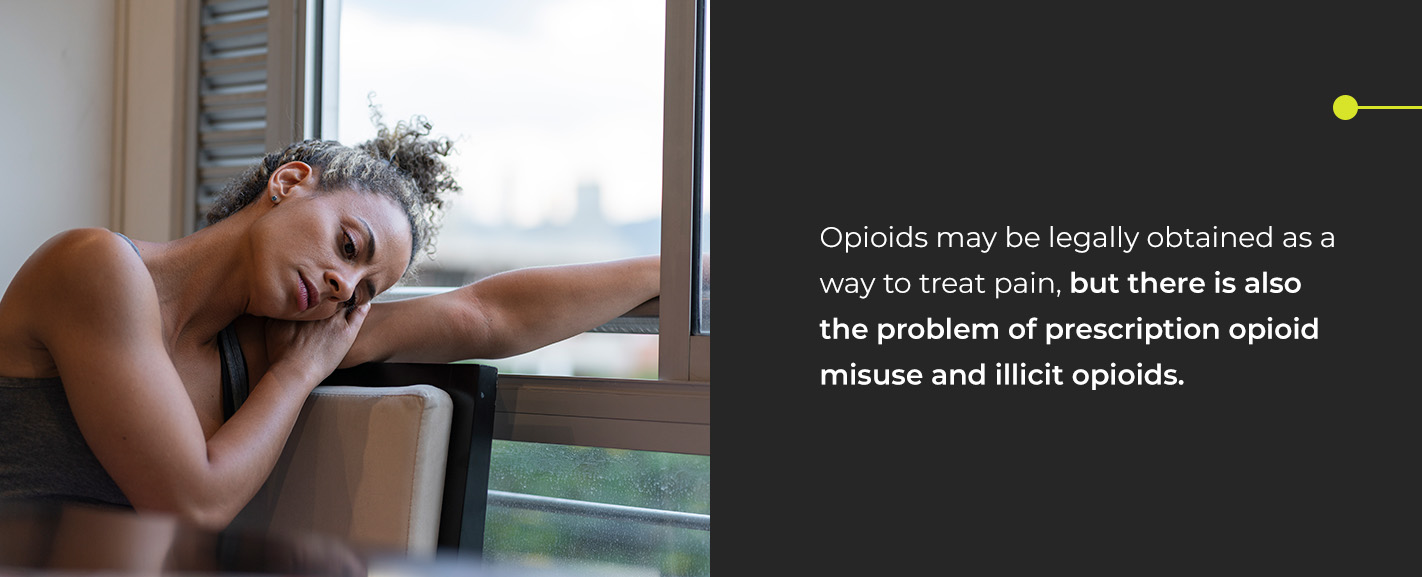
- Nausea
- Vomiting
- Dehydration
- Changes in blood pressure
- Irregular heart rate and rhythm
- Cardiovascular problems
- Dizziness
- Loss of coordination
- Sudden and marked disinhibition
- Unusual behavior
- Loss of consciousness
- Coma
Respiratory depression is a huge risk when mixing alcohol and opioids, especially illicit ones like heroin, that have extremely high potency. When someone experiences respiratory depression, their breathing becomes shallow and may stop. Respiratory depression is a well-known risk of taking opioids by themselves, and combining them with alcohol only makes the risk more significant.
4. Alcohol and Hallucinogens
Hallucinogens are an extremely unpredictable class of drugs in their own right. It is difficult to predict how the same hallucinogen will affect different people, or even if it will affect a single person in the same way over multiple uses.
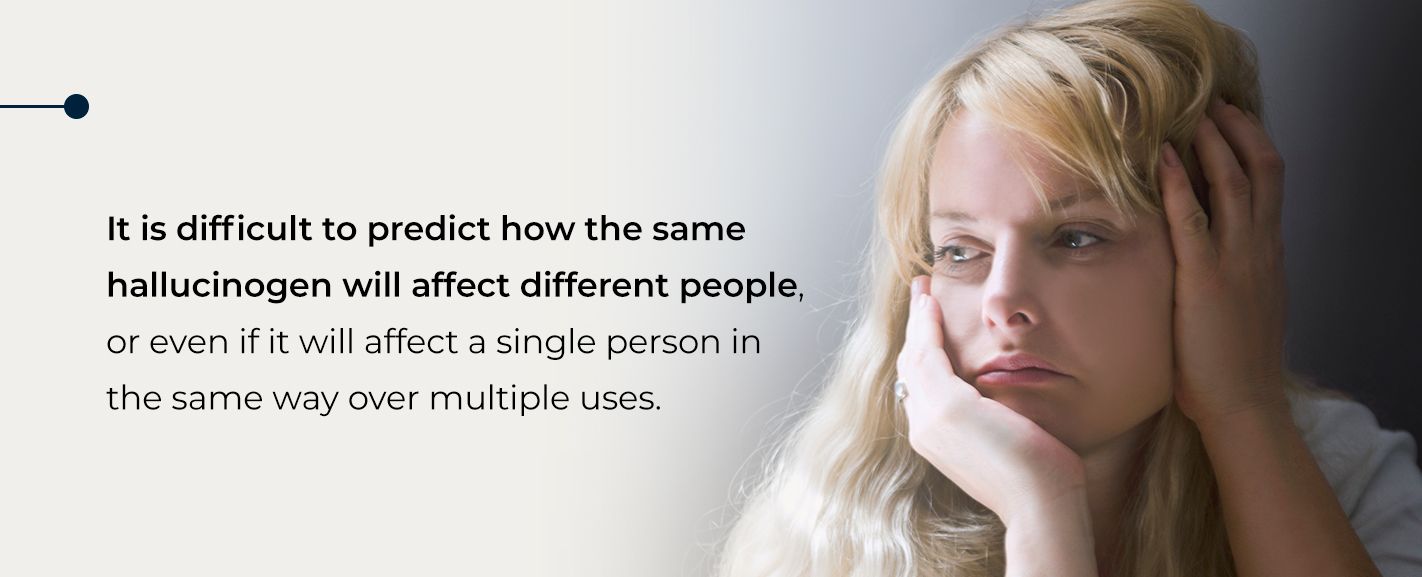
- Nausea
- Vomiting
- Fainting
- Dizziness
- Headaches
- Increased heart rate
- Seizures
- Increased body temperature
Alcohol may also increase the likelihood of having a “bad trip.” It can increase negative feelings like depression and fear, which can make hallucinations feel more overwhelming and hostile. Hallucinogens may also impair a person’s self-awareness, keeping them from realizing how much they have already drunk and increasing the likelihood that they might drink more.
It is important to note that there are three types of hallucinogen: psychedelics, dissociatives and deliriants. Dissociatives and deliriants are much more likely to create extremely unpleasant experiences on their own, and alcohol only worsens them. These two classes of hallucinogens are also more toxic than psychedelics and more likely to result in addiction, so mixing alcohol with them is even more dangerous.
5. Alcohol and Methamphetamine
Methamphetamine, or meth, has very strong stimulant effects on the CNS. Its effects include feelings of energy, excitement and euphoria. Alcohol, on the other hand, depresses the CNS. These opposite methods of action appear to “cancel out” the effects of the other drug when someone takes them together. This is the same problem present with mixing prescription stimulants and alcohol, but meth is much stronger. This can lead to significant psychological disturbances, such as:
- Aggression
- Paranoia
- Delusions
- Psychosis
- Violent outbursts
- Acts of violence
The effects of mixing alcohol with strong stimulants are unpredictable at best and fatal at worst.
 Get Help for Polydrug Abuse at Gateway Foundation
Get Help for Polydrug Abuse at Gateway Foundation
Mixing drugs and alcohol is dangerous and, in many cases, life-threatening. Whether it’s a case of accidentally forgetting that a prescription interacts with alcohol or an intentional attempt to alter the experience of another substance, the potential effects can be devastating. If polydrug abuse continues unchecked, it can also greatly increase the chance of developing co-occurring disorders. If you or someone you care about is struggling with polydrug abuse, getting help is essential.
Gateway Foundation has more than 50 years of experience in addiction treatment, and our innovations in addiction medicine have helped more than one million people graduate our programs. Our programs and services are available at all levels of care, so every patient can find a program that fits their needs.
If you are interested in learning more about Gateway Foundation and starting on the path to recovery, call 877.505.4673 or contact us online to explore your addiction treatment options.

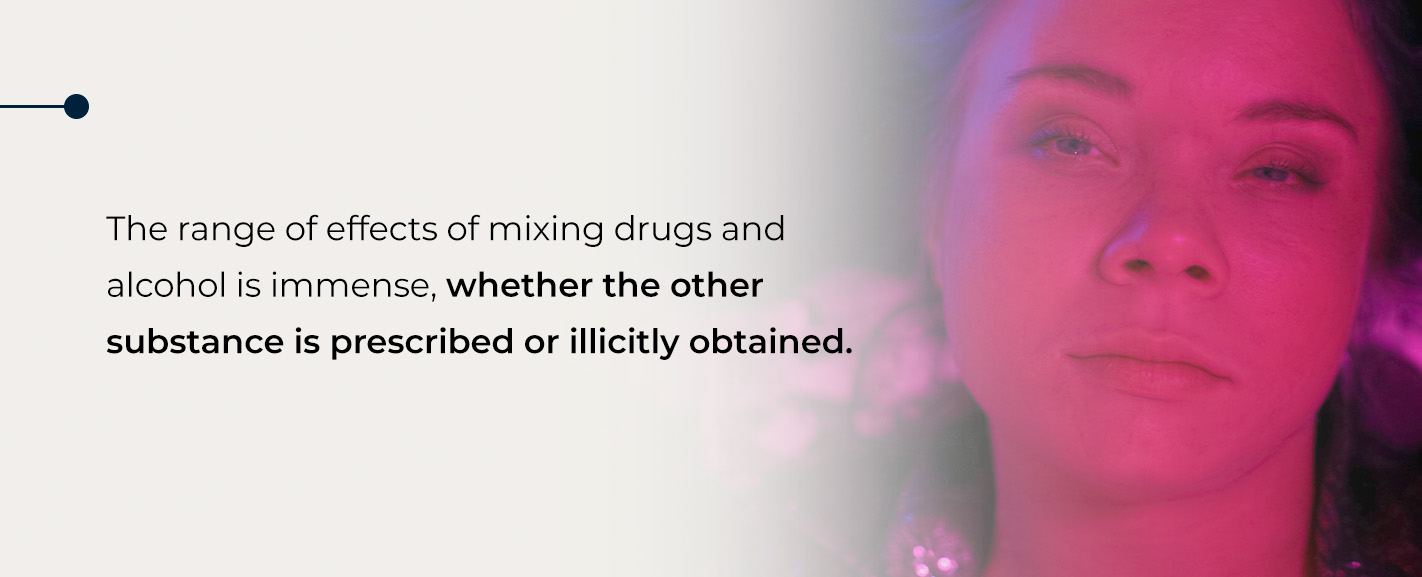 Dangers of Mixing Alcohol and Prescription or Over-The-Counter Drugs
Dangers of Mixing Alcohol and Prescription or Over-The-Counter Drugs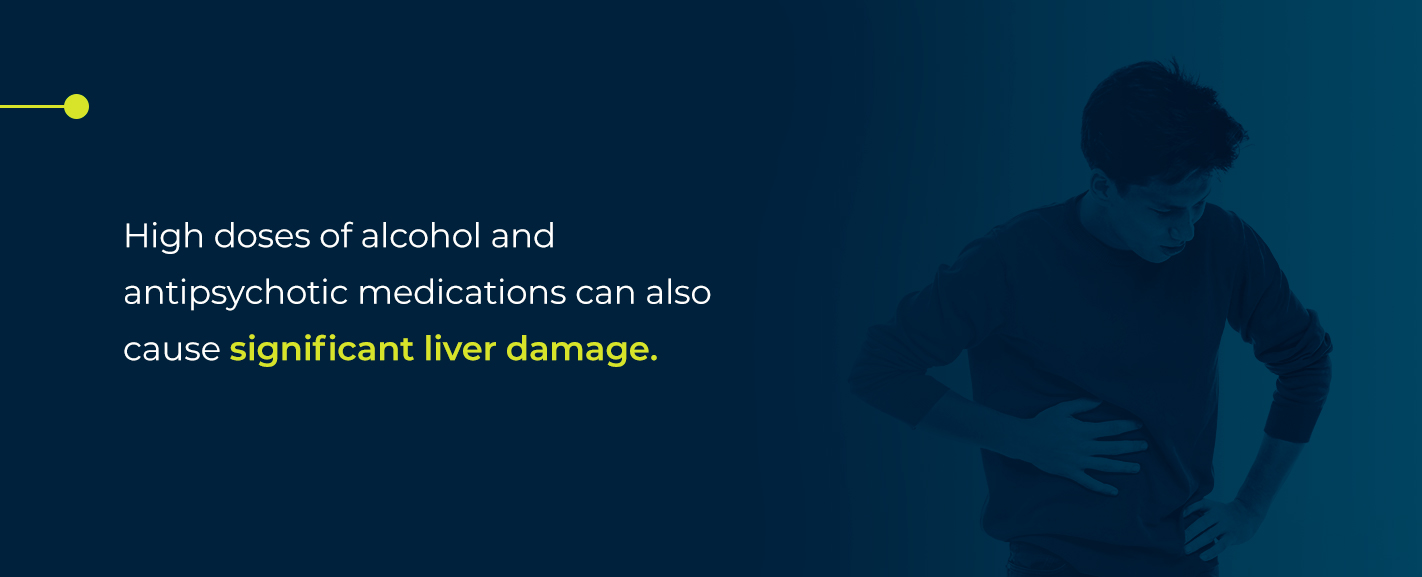 Anti-Seizure Medicines
Anti-Seizure Medicines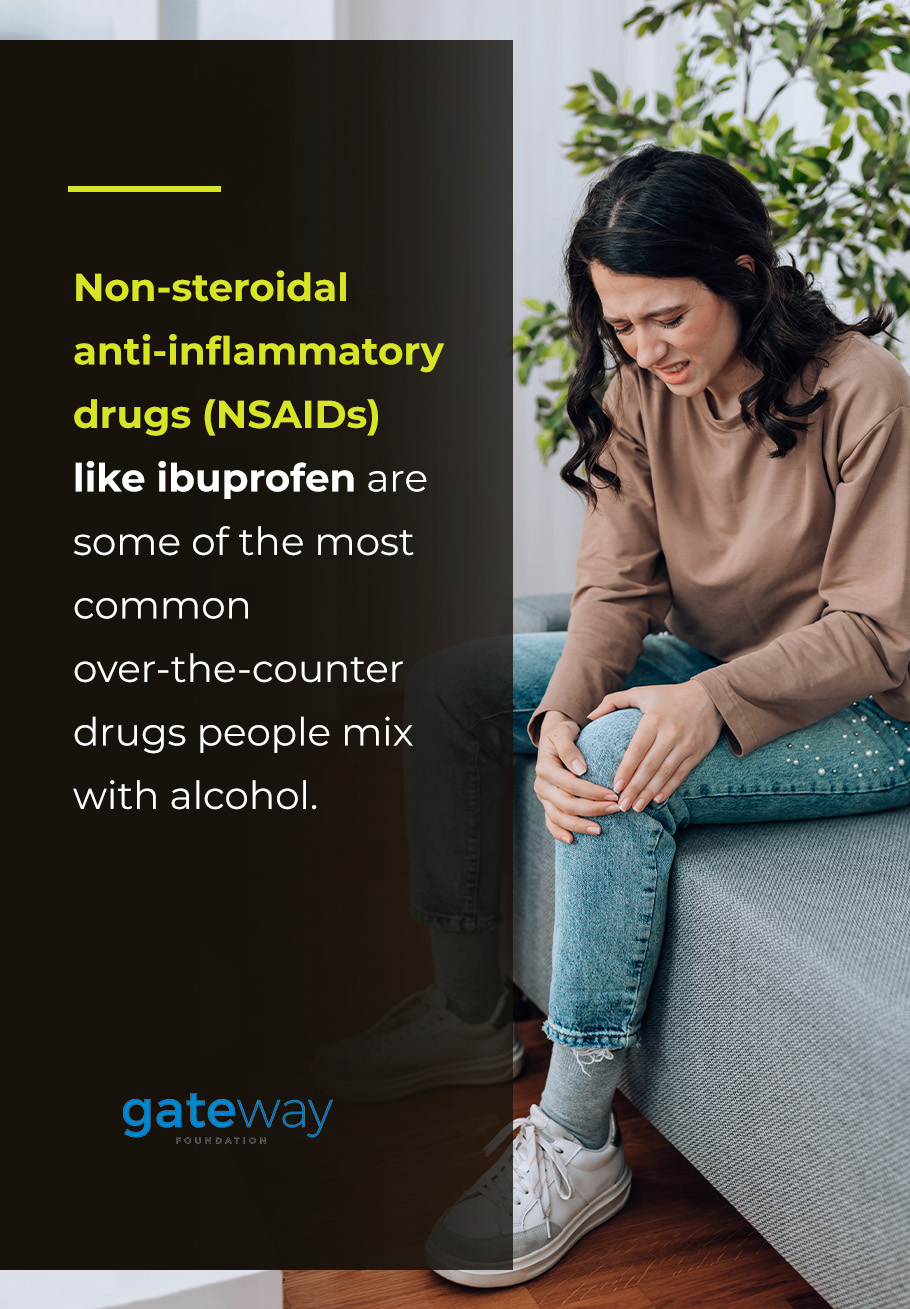
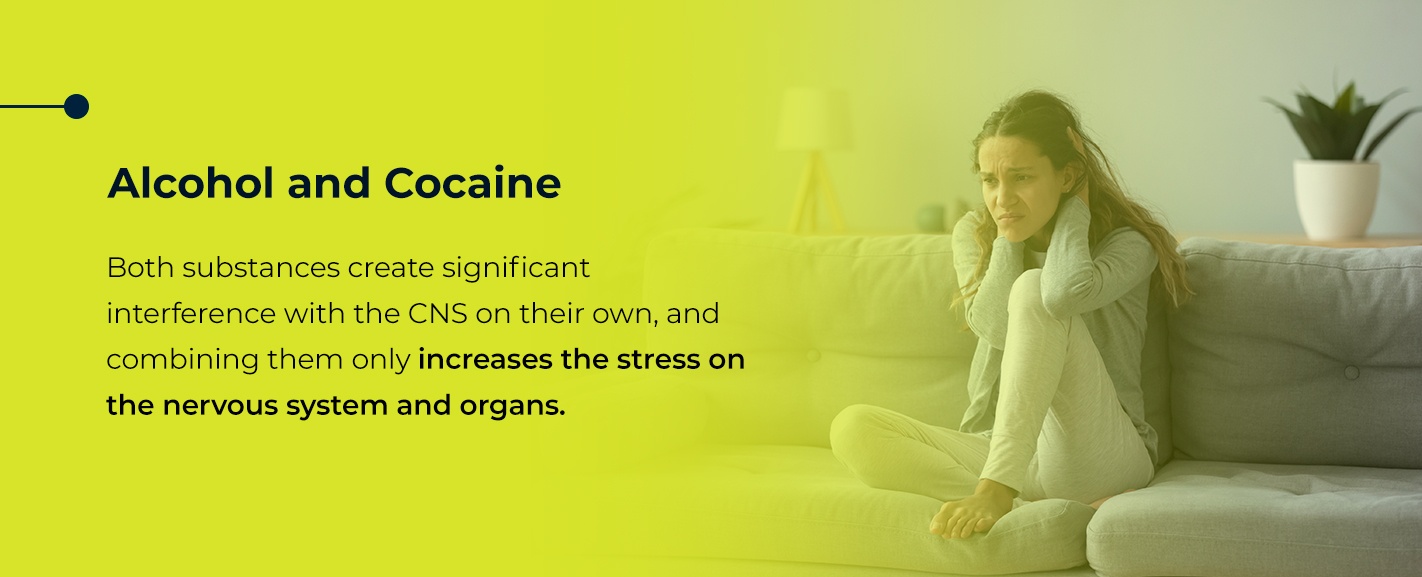 Cocaethylene
Cocaethylene